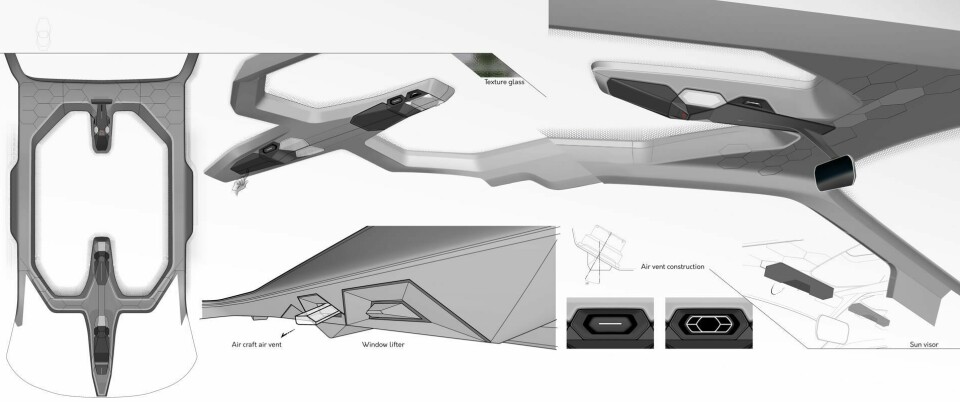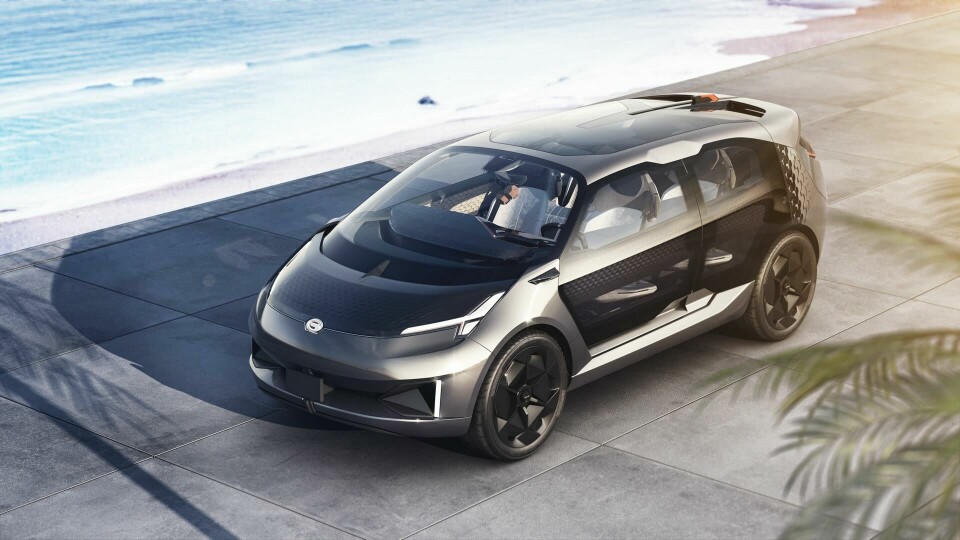
GAC Entranze - designed to share experiences
Designer in VR (without a clay stage) the GAC Entranze harnesses the creative strengths of current technology to craft an interior for shared experiences
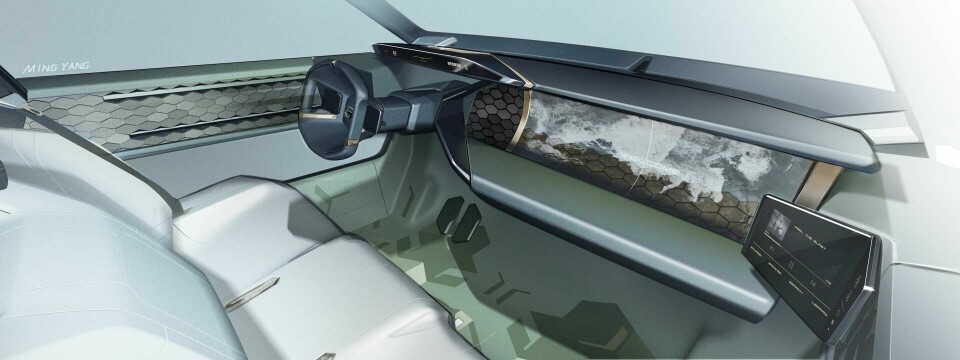
GAC Motor set up its advanced design centre in Los Angeles in 2017 – its first satellite studio outside China. The LA team is led by executive design director Pontus Fontaeus, who was hired in October 2017 from a faltering Faraday Future, where he had overseen interiors, branding and user experience. Not much more than a year later, GAC’s LA studio wheeled out its first concept car, a seven-seat electric MPV called Entranze, revealed at the 2019 Detroit auto show.
The car aims to combine the practicalities of a versatile people carrier with the presence and desirability of a full-size SUV. Offering a bullet-shaped profile, panoramic glazed roof, large wheels and dramatic pop-out sliding doors front and rear, it seeks to dodge the dowdy, panel-van associations that blight many MPVs. The compact, low-slung packaging of the car’s electric powertrain afforded considerable freedom in cabin layout, which GAC employed to create a cabin designed to meet the needs of families and groups of friends.
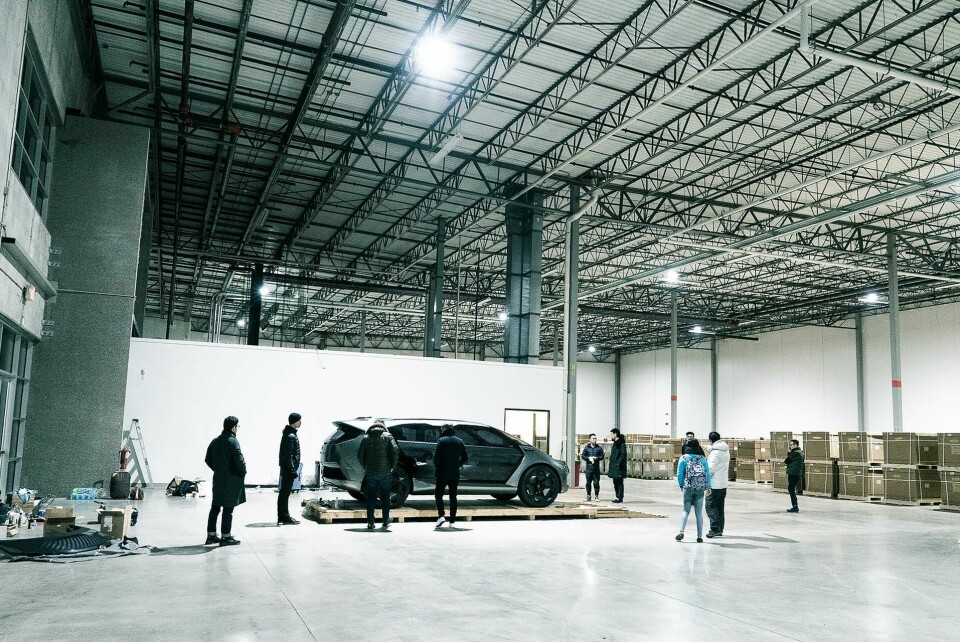
Indeed the cabin layout provided the driving force for the whole project, according to Fontaeus. “We wanted to create a special vehicle that would better enable us to create and share wonderful experiences with those close to us – a vehicle that represents ‘we’ instead of ‘me’,” he announced at the car’s unveiling. The design team were particularly inspired by the notion of the great American road trip, aiming to fashion a car fit for journeys to the ocean, mountains, forests and deserts, as well as quicker trips through crowded city streets.
“This is a very human-centric design,” Fonteaus says of the Entranze concept. “It’s for the prime time in our lives, when we have a family.” He notes that car design very often skirts around this key notion, focusing on other lifestyle perspectives and emotional triggers like sportiness. “We set this as a challenge: to do a seven-seater that looks good,” he adds.
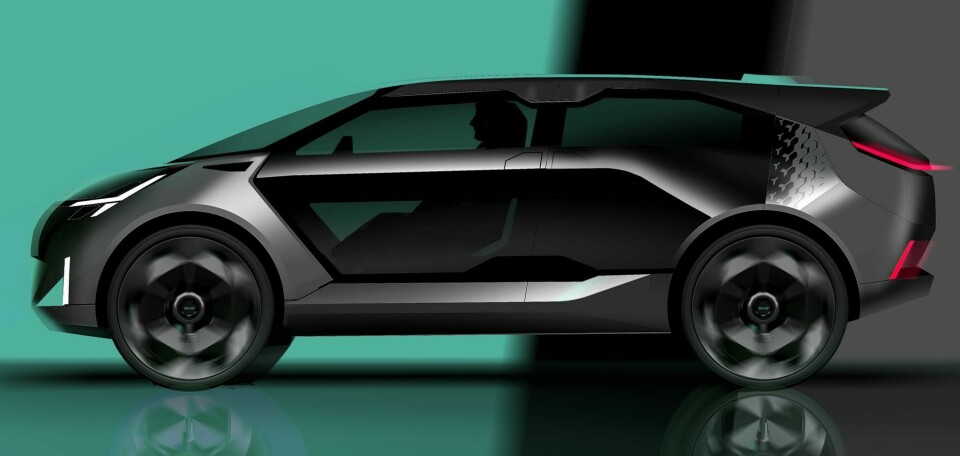
The LA studio took the lead in the project, supported by colleagues at GAC’s advanced design studio in Shanghai and at headquarters in Guangzhou. The design team adopted a highly digital process, with joint virtual-reality sessions allowing designers in California to readily share their ideas with colleagues in China.
“This car was completely VR,” says Fontaeus. “I’m not kidding; no clay whatsoever. We did an ingress-egress model in China, like a buck, and we videotaped it,” he adds. “But we are in the VR every day – we are in the Matrix – and this is so fast for us. We look at exterior, interior and CMF at the same time, and then we bring cars into VR that are known entities, to gauge proportions. So we are a completely digital studio, we don’t have a skunk shop in the cellar where there’s a team of clay modellers.”
Work on interior and exterior progressed simultaneously, with the team attempting to break down barriers between the two tasks. “Today, with cars, when the exterior and interior come together, it looks like a forced marriage,” Fontaeus observes. “You don’t find any symbiosis in design or graphics or anything. But we started to design the car from the inside out, so we have the exterior being a reflection of that.”

For example, Fontaeus cites the lack of a distinct shoulder between the exterior glasshouse and body sides, which arose as a result of prioritising interior volume. “We moved the passengers as much outboard as we could, so we have no shoulders or catwalk,” he says. “That gave us space for a bench seat.”
The three-abreast format in the front row recalls the broad bench seating of classic American automobiles. It also led to a 3+2+2 layout, opening up space in the centre of the cabin that became home to a sliding centre console. The console can travel from front to rear, passing under the central front seat, to serve occupants in all three rows.
“We were very inspired by aircraft cabins,” Fontaeus adds, noting that HVAC vents and controls are sited overhead. SUVs, spacecraft and industrial machinery also appeared on the mood boards, supporting key decisions such as the adoption of twin sliding doors.
“We had a vision from the beginning that this was more like a spacecraft,” Fontaeus says. “Show me a science fiction movie where the doors have hinges! Sliding doors are very space efficient and very futuristic.”
A key refinement to the sliding-doors approach was to create a tall sill, reducing the apparent height of the door aperture. “We have this fold-out rocker panel, because a big sliding door covering the wheels doesn’t look good. So now you still see most of the wheels even when the doors are out.”
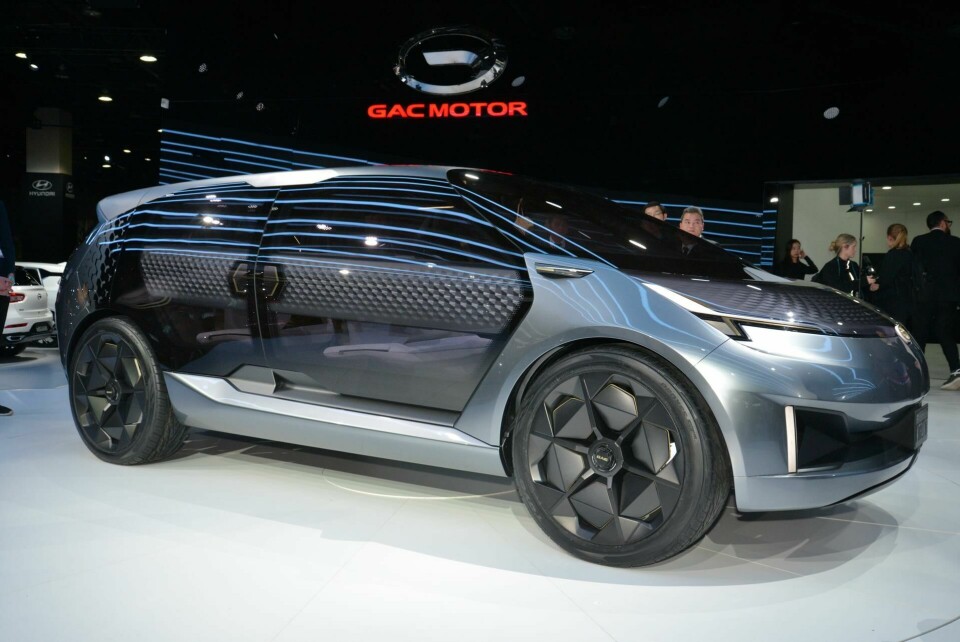
The dark, angular wheels measure 24 inches across. “We could have gone to 22,” Fontaeus says. “It’s a statement. I don’t think, personally, they look too big on the car, but this car would look good with 21s or 22s, because we tested and tried it virtually.”
The fold-out rocker panel stretching between the wheels is carpeted on the inside, serving as an entry step as well as alfresco seating when opened out. “The car is really connected to what’s going on around it,” Fontaeus says. “It’s like a bench seat. You can sit on it at the beach and enjoy the sunset.” Doorway arrangements were also influenced by Californian architecture. “We live very much outdoors,” Fontaeus notes. “Our houses have sliding doors to the terrace.”
The Entranze features unusual HMI arrangements. A convex, 17-inch screen is placed ahead of the front passenger rather than in the centre of the IP. It serves only display functions, however, with no touchscreen capability. Instead, small OLED touchscreens sit at either end of the IP, governing functions normally gathered in the centre. The large passenger display can be hidden behind a sliding cork cover. “If you don’t need the technology you don’t want to look at a black screen – how boring is that?” says Fontaeus. “This is taking you back to a wooden cabinet.”
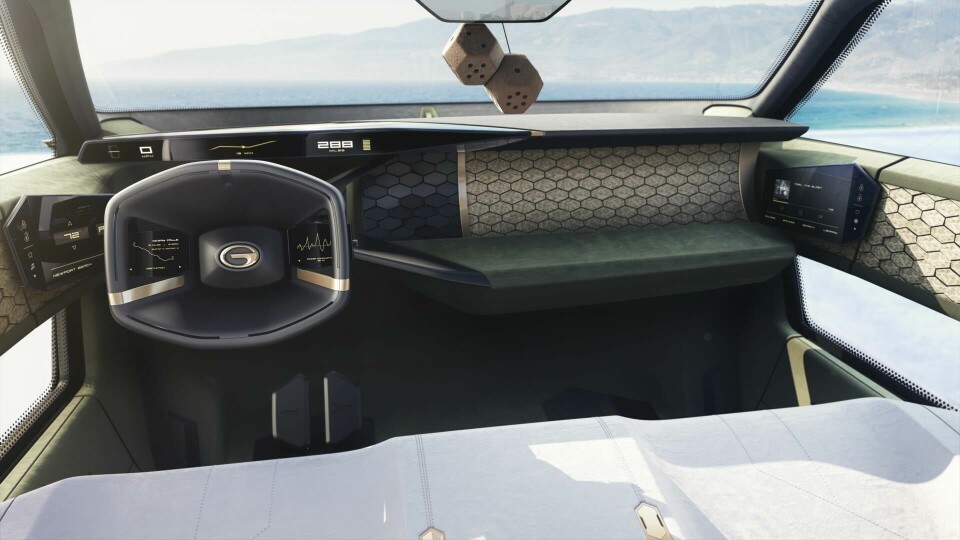
For the driver’s information needs, a slim instrument cluster and head-up display is supplemented by a pair of small “helper screens” – touchscreens that turn along with the wheel – mounted behind the wheel’s rim. “Everyone tries to take away the steering wheel today, but we emphasise it,” Fontaeus explains. “We have dynamic buttons in the steering wheel because they’re an excellent tool, so why take them away?” The helper screens then provide “what you need initially to understand the dynamic buttons and how you interact with them”.
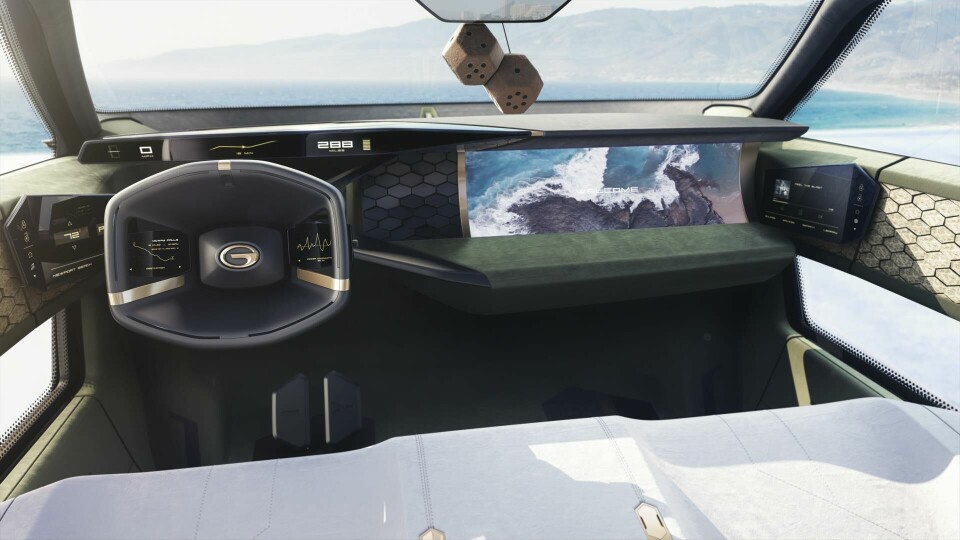
GAC partnered with Swedish interaction specialist Neonode Technologies to develop the Entranze’s control interfaces. Neonode says it aims to help drivers deal with secondary tasks without taking their hands from the wheel or their eyes from the road. The company providing the touch controls sited around the wheel’s perimeter. The touch controls are designed to link up with the HUD and are supplemented by gesture and voice interaction. The team also worked with Magneti Marelli on integration between the UI and exterior sensors.
While it debuted in Detroit, the Entranze show car itself was not made in America, but assembled in Italy. Of course that does not detract from the concept’s status as an American design for a Chinese brand; the first fruit of GAC’s Los Angeles studio. Indeed, Entranze’s US credentials are celebrated through a couple of whimsical details. Labels sewn into the seats feature a stylised rendering of the California state flag, while the rear-view mirror sports a pair of unusual fuzzy dice, shaped to match the car’s hexagonal motif. Like the bench front seat, the hanging dice are meant as a fond nod to US automotive history. “Pilots had them in their cars in the ’50s and ’60s,” Fontaeus explains. “It’s a little bit of Americana.”
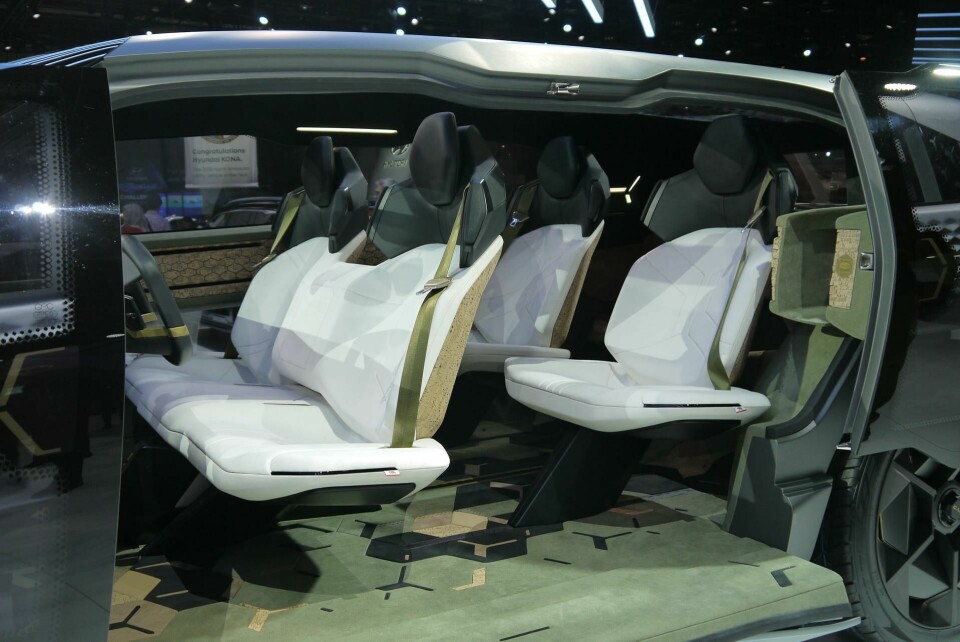
The cabin as a whole is intended to be welcoming, evoking home interior design, with soft, environmentally friendly materials and earthy colours. “Car interiors are red, black or grey,” notes Fontaeus. “Compare that to a room [in your home].” One notable interior material is cork – a natural, renewable choice. “It’s something you harvest every six-to-nine years from the tree bark, and then it regrows throughout the 300-year life of the tree,” Fontaeus says. “It’s a super-sustainable material.”
Alcantara in shades of cream, brown and green covers not just the seats but the floor, where it forms a camouflage-like hexagonal pattern. The hexagon motif is repeated in the cork trim as well as the car’s exterior panels. A hexagonal grid is of course a space efficient way of packing items together that conveys a sharp, technical appearance – and yet also hints at the natural forms of honeycombs.
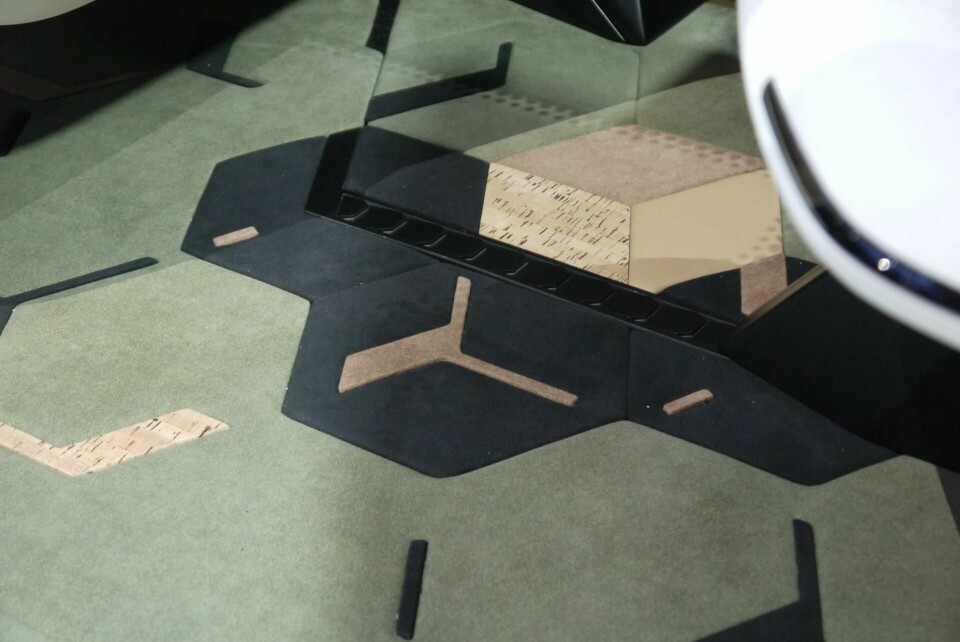
“There’s a lot of softness plus hard, crystal shapes,” Fontaeus says of the interior. “It’s dressed in a melange Alcantara that gives a soft, powdery look. So it’s all about playing with these values: hard, soft, sharp, sculpture.”
Scent dispensers are built into the shoulders of the seats, alongside audio speakers, with combined ambient sounds and aromas offering themed, multi-sensory experiences of forests or beaches.
Metal highlights rendered in brass add warmth to the cabin. “We were going to go even wider with the CMF materials, but we believe that the car is far enough out,” Fontaeus says. “We have to use something that people are accustomed to. If you challenge everything at the same time, people have a problem finding a foothold.”
